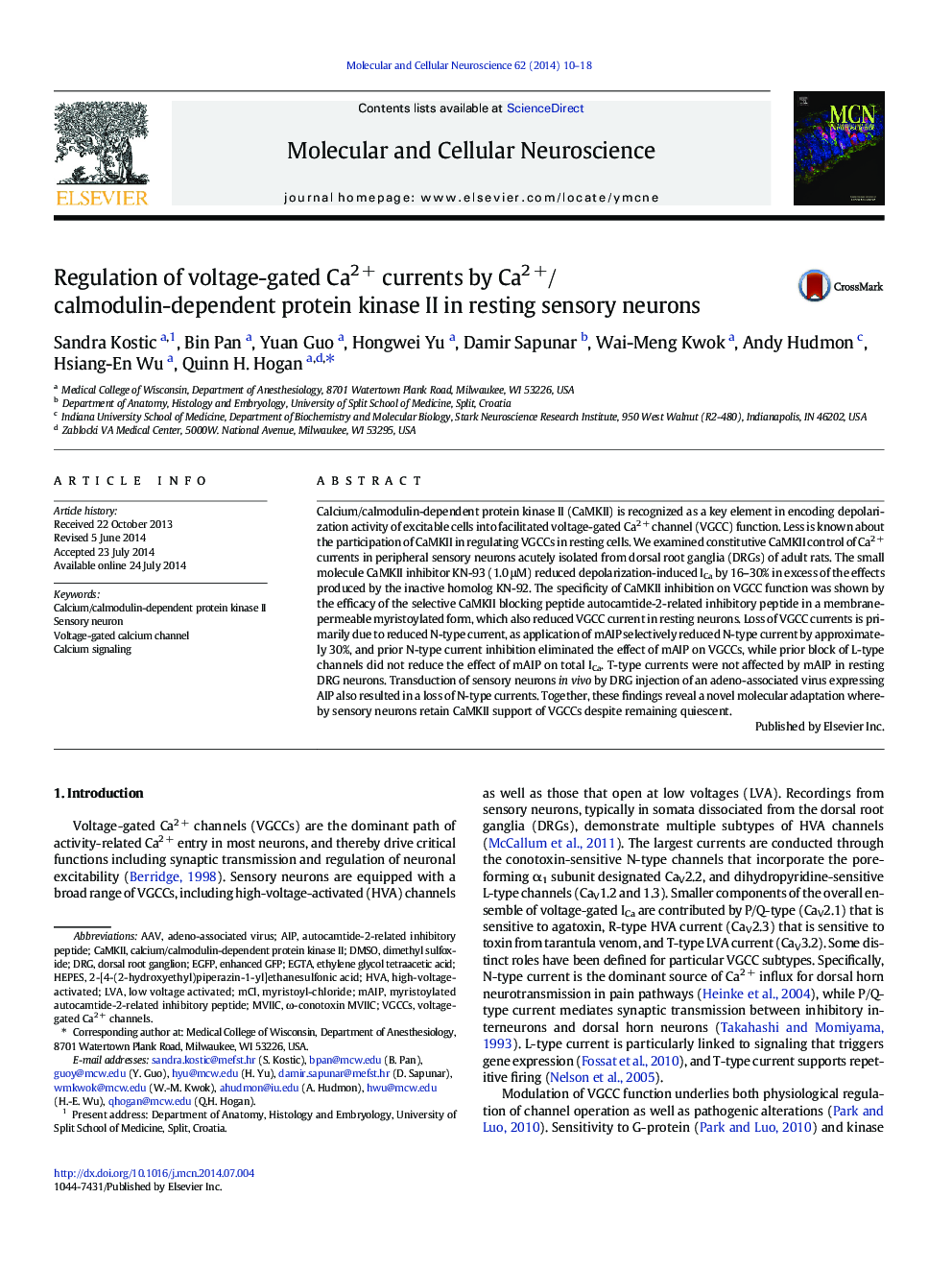| Article ID | Journal | Published Year | Pages | File Type |
|---|---|---|---|---|
| 2198444 | Molecular and Cellular Neuroscience | 2014 | 9 Pages |
Calcium/calmodulin-dependent protein kinase II (CaMKII) is recognized as a key element in encoding depolarization activity of excitable cells into facilitated voltage-gated Ca2 + channel (VGCC) function. Less is known about the participation of CaMKII in regulating VGCCs in resting cells. We examined constitutive CaMKII control of Ca2 + currents in peripheral sensory neurons acutely isolated from dorsal root ganglia (DRGs) of adult rats. The small molecule CaMKII inhibitor KN-93 (1.0 μM) reduced depolarization-induced ICa by 16–30% in excess of the effects produced by the inactive homolog KN-92. The specificity of CaMKII inhibition on VGCC function was shown by the efficacy of the selective CaMKII blocking peptide autocamtide-2-related inhibitory peptide in a membrane-permeable myristoylated form, which also reduced VGCC current in resting neurons. Loss of VGCC currents is primarily due to reduced N-type current, as application of mAIP selectively reduced N-type current by approximately 30%, and prior N-type current inhibition eliminated the effect of mAIP on VGCCs, while prior block of L-type channels did not reduce the effect of mAIP on total ICa. T-type currents were not affected by mAIP in resting DRG neurons. Transduction of sensory neurons in vivo by DRG injection of an adeno-associated virus expressing AIP also resulted in a loss of N-type currents. Together, these findings reveal a novel molecular adaptation whereby sensory neurons retain CaMKII support of VGCCs despite remaining quiescent.
